“Incredible, why just here?” This is what you will exclaim in these “out of place” places in Lazio. Something happened here, because of man, nature or fate, that changed the history of Rome or of a small, little-known village. Therefore, these sites became a legend, which tells us a story beyond our expectations. Walk with us among these places and get enchanted!
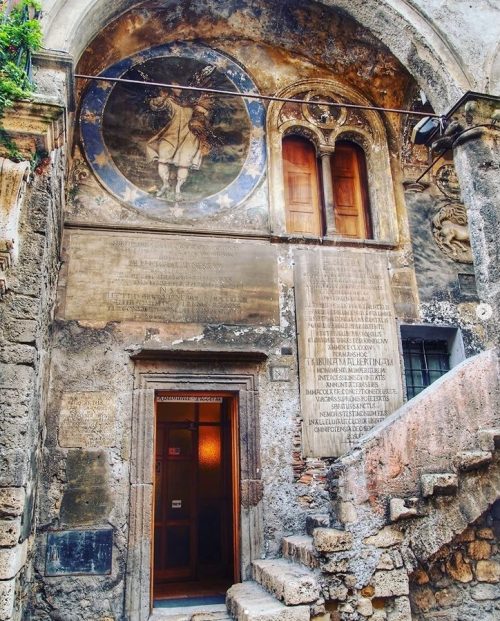
Casa Barnekow in Anagni Instagram @takashi.hara.75641
The fascinating Casa Barnekow was built in Anagni under Pope Gregorio IX, and then purchased in 1860 by the Swedish Baron, painter, and alchemist Albert von Barnekov. He married Carolina Ascenzi, a splendid model from Anagni, who became his muse. The House is a unique example of medieval architecture, with two floors connected by an external staircase, framed by two large round semi-circular arches, a central column and small lateral pillars, and a decoration of small arches supported by shelves.
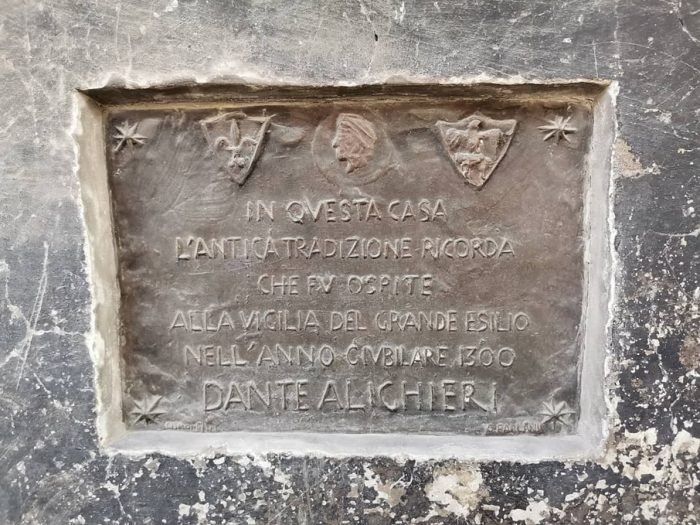
Instagram @casa_barnekow
An inscription on the facade reports Dante Alighieri‘s stay in 1300. Looking closely at the facade, we discover impressive details, such as the enigmatic frescoes and tombstones with inscriptions in various languages, created by the Baron himself, with alchemical, esoteric, and religious symbols, sometimes difficult to understand. Why did he create such a work? It looks like a hallucination or a vision. Anyway, it celebrates Barnekow’s conversion to Catholicism and his passion for esotericism.
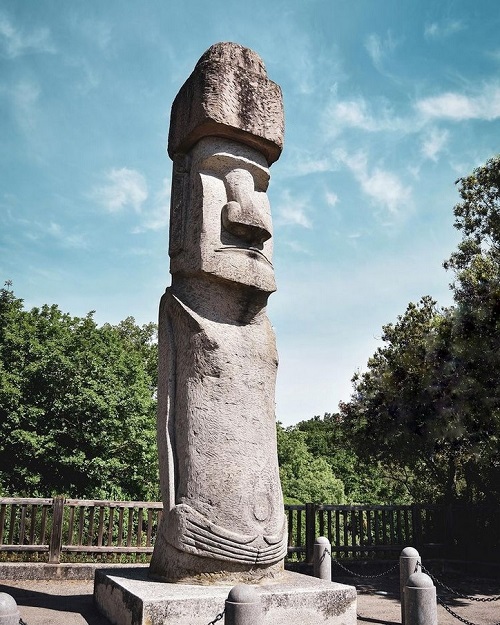
Statua Moai a Vitorchiano Ig @carosidomenico
Vitorchiano, a small village on a spur of peperino rock, where castle walls, towers, churches and houses are made of the same material as the cliff, is illuminated by ancient streetlamps, which highlight the grey stone of the only Moai outside Easter Island.This work originated in 1990, from a twinning between the small village of Vitorchiano and the inhabitants of the Easter Island, who came to Italy to restore their Moai with our peperino, the lava stone most similar to their original one. In just three weeks, eleven Maori indigenous, members of the Atan family from the island of Rapa Nui, created this human-like monolith. They used small axes to carve the clean, hard lines and make it stylistically identical to the six-metre-tall originals. The elongated face has the somatic features of the ancient Polynesians, the long-eared people, who destroyed the original short-eared people. On his head, the monolith wears a pukapo, the typical moai headdress, carved on pink peperino. On the barely visible bust, the navel stands out, as a symbol of the centrality of man, while the thumbs pointing upwards can be seen among the long fingers.Originally the statue was located in the central Piazza Umberto I and, since 2008, on the Teverina Provincial Road, with its gaze turned towards the village, an imperturbable guardian. All the Italian people watched the ceremony for the installation of the Totem on TV, moved by the sacred songs accompanied by the ukulele and the propitiatory dance of the Polynesians in traditional dress.
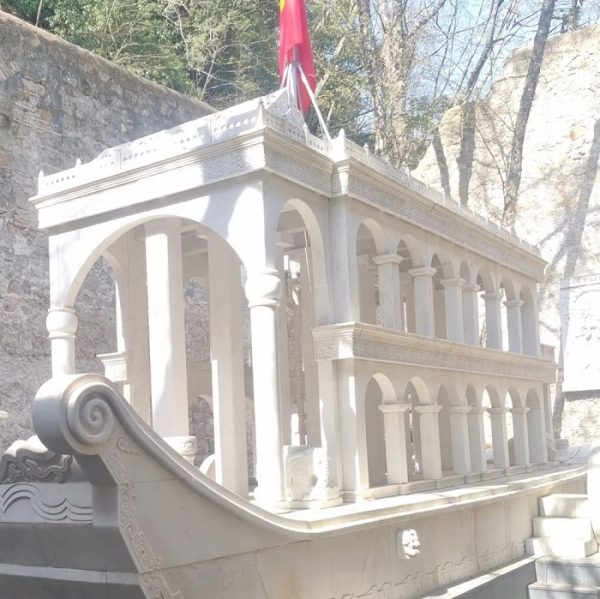
The Chinese Ship in Soriano nel Cimino Fb @flavia.palma.7127
In the Sant’Egidio estate, in Soriano nel Cimino, we can admire a very singular monument hidden within the ancient walls of the Holy Trinity Church, a Chinese Ship in white marble. In 1965, Eugenio Benedetti, the owner of the land, met Pu Yi, the last Emperor of China. He was in fact capable businessman, who invested in the opening of marble quarries in China. Therefore, the Chinese Government gave him, as a birthday present, hundred tons of marble and Benedetti built a copy of the great vessel of Empress Ci Xi, docked since 1895 on the shore of Kunming Lake in the Summer Palace in Beijing. It was a 1:3 scale homage to the great protagonists of the 20th century, wonderfully hidden among the ruins of a medieval hermitage in the woods, in the shadow of the Cimini Mountains.
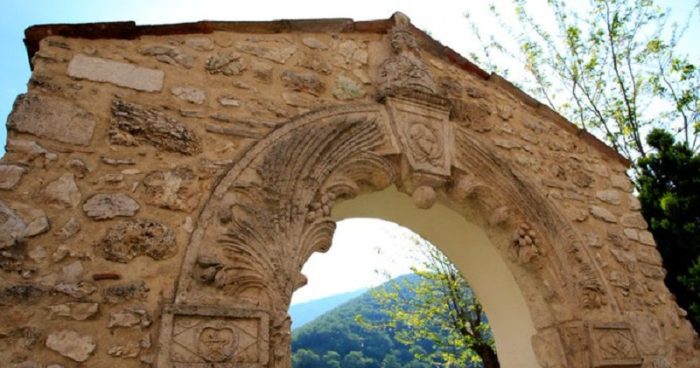
Alchemical Arch in Rivodutri
Let us pretend to be Harry Potter for a day and discover the secrets of the Alchemical Arch in the Riserva Naturale dei Laghi Lungo e Ripasottile. In the eleventh century village of Rivodutri, a portal was built with cryptic bas-reliefs carved on limestone, bearing alchemical, mythological, and sacral symbols and inscriptions. The task of the alchemical symbol is to attract the attention and, at the same time, to create a general harmony as the Whole becomes One. The door shows the instructions, in plain sight to the aware observers but hidden to those looking for them. The two-faced Janus explains to us that this Door leads everyone to a different place, because the alchemical reaction will be different for each one of us. In fact, the Arch is one of the magical time-space sites, taught in the famous Hogwarts School! This monumental arch was built at the turn of the 1600s to access the palace of the Camiciotti Family, wealthy administrators of public and ecclesiastical goods. It was popular at the time to study esoteric sciences, and so the Camiciotti Family hired a sculptor and an alchemist to embellish the Palace and the main Door. The identity of the two artists is still unknown and the sumptuous residence no longer exists, but the door is still there, in Rivodutri, wide open onto a garden.
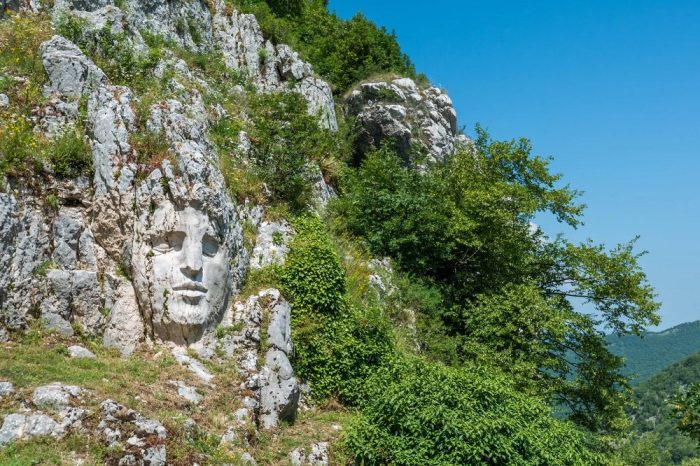 Walking through the beech forests of the Parco Regionale dei Monti Simbruini, we come across the impressive village of Cervara di Roma, a true open-air museum, perched on the Mountain sculpted by the Artists. The Staircase of Peace is a scenic route among totems, book pages and artistic figures carved in stone, which runs from the historic centre of the town to the remains of the medieval fortress. This wonder was created as a tribute to the many artists who chose Cervara di Roma as a source of inspiration in the nineteenth century. Painters, writers, musicians, and intellectuals from all over the world arrived here on during their Grand Tour, to appreciate the beauty of the views and the culture of this small unknown village. The renowned Maestro Ennio Morricone lived in Campaegli for over thirty years and, to celebrate this enchanting place, he composed the “Notturno – Passacaglia per Cervara”.
Walking through the beech forests of the Parco Regionale dei Monti Simbruini, we come across the impressive village of Cervara di Roma, a true open-air museum, perched on the Mountain sculpted by the Artists. The Staircase of Peace is a scenic route among totems, book pages and artistic figures carved in stone, which runs from the historic centre of the town to the remains of the medieval fortress. This wonder was created as a tribute to the many artists who chose Cervara di Roma as a source of inspiration in the nineteenth century. Painters, writers, musicians, and intellectuals from all over the world arrived here on during their Grand Tour, to appreciate the beauty of the views and the culture of this small unknown village. The renowned Maestro Ennio Morricone lived in Campaegli for over thirty years and, to celebrate this enchanting place, he composed the “Notturno – Passacaglia per Cervara”.
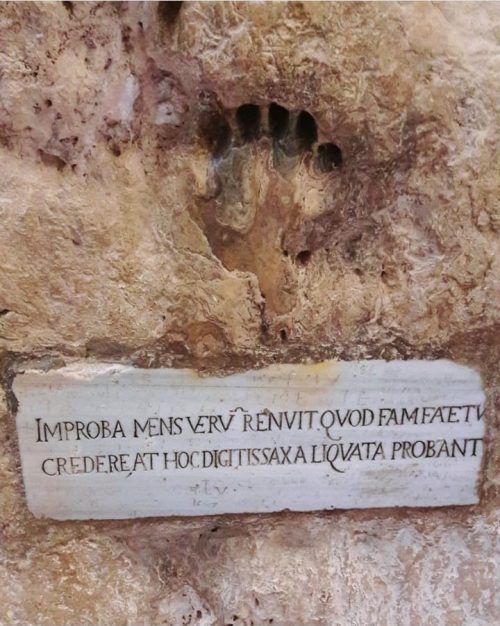
Mano Del Turco on the Montanga Spaccata Instagram @dereksodre.ofc
The protected area of Monte Orlando in the Parco Regionale della Riviera di Ulisse preserves an incredible jewel, unique in the world, surrounded by legends handed down over the centuries, the Turk’s Hand on the Montagna Spaccata in Gaeta. Walking along the corridor in the bowels of the promontory, you reach the Grotta del Turco. On a wall, you can clearly see the five holes corresponding to the fingers of a hand, belonging, according to a Christian legend, to an unbelieving Turkish sailor. Immediately after the death of Jesus Christ, the veil of the Temple in Jerusalem was torn, and a terrible earthquake led to the mountain splitting into three parts. The sailor, who did not believe in the divine origin of this phenomenon, leaned with his right hand on the rock, which miraculously became soft as wax, acting as a mold. Under the prints, we can read this writing in Latin, “An incredulous man refused to believe what the tradition reported, as proven by this rock that softened at the touch of his fingers.”
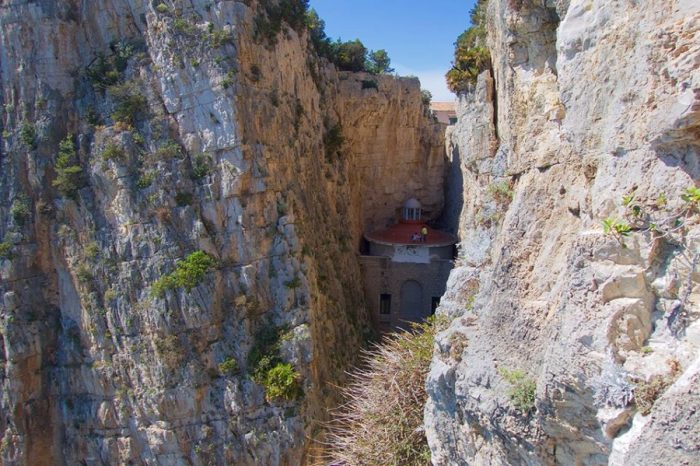
Sanctuary of the SS. Trinità in Gaeta
Continuing the descent, you arrive at a terrace almost at sea level, from which you can enjoy the view of the Grotta del Turco, at the foot of the main fissure, and the splendid shades of green and turquoise of the sea, caressed by sun rays. Not to be missed, a visit to the Sanctuary of the SS Trinità, a site of prayer and pilgrimage extraordinarily balanced on a boulder, which, having detached itself from the mountain, fit perfectly into a crack. Let us marvel, from here, at the magnificent view of the sea and the high cliffs. Inside, the Sanctuary is enriched with majolica panels depicting the Via Crucis, the Chapel of the Crucifix and the bed dug into the rock, where San Filippo Neri meditated.
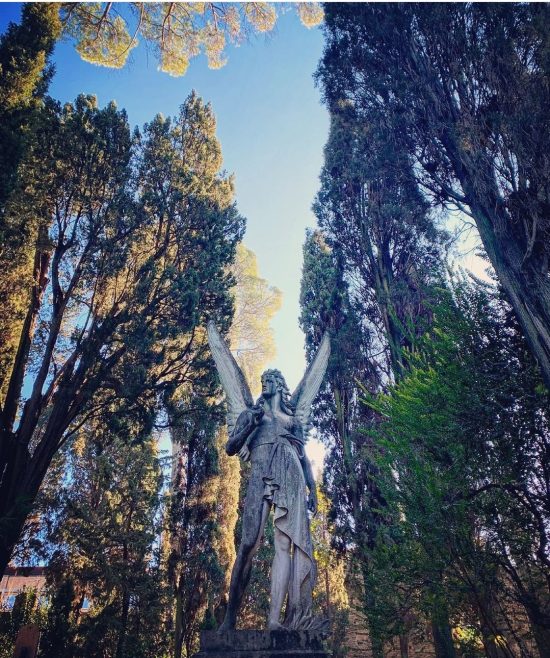
Non-Catholic Cemetery in Rom Instagram @donna_rossella
Entering the Testaccio district, between the Aurelian Walls and the Pyramid of Cestius, we will find a Neo-Gothic Portal leading intoo the Non-Catholic Cemetery, where history and faith come together. Built under the concession of Pope Clemente, it has always been the centre of artistic freedom beyond every border and religion, hence the name “Cemetery of Artists and Poets”.
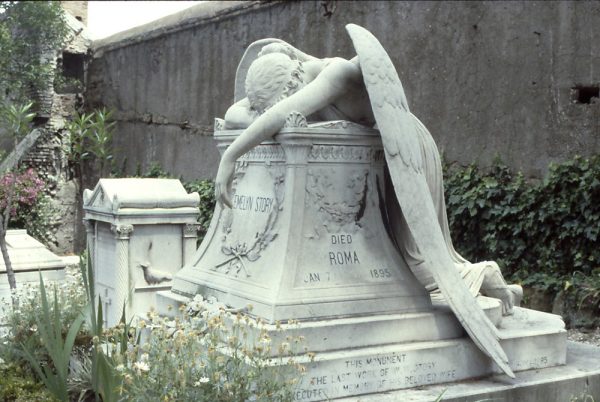
Angelo del dolore @Carptrash
Today, the graveyard is a site of culture and grace, where to stop in front of each tomb, fascinated by a magnetic atmosphere. The Angel of Sorrow, the symbol of this place, was created by the American sculptor William Wetmore Story, buried here with his son and wife, to whom he dedicated the weeping angel. Also noteworthy are the elegant tombs of the English poets John Keats and Percy Bysshe Shelley, the one of Goethe’s son, of the Russian painter Karl Brullo and of Andrea Camilleri.Among them, the tomb of Romeo, the friendly Roman cat, emblem of the cat colonies in Rome. Our trip ends here, did you know all these bizarre places?
